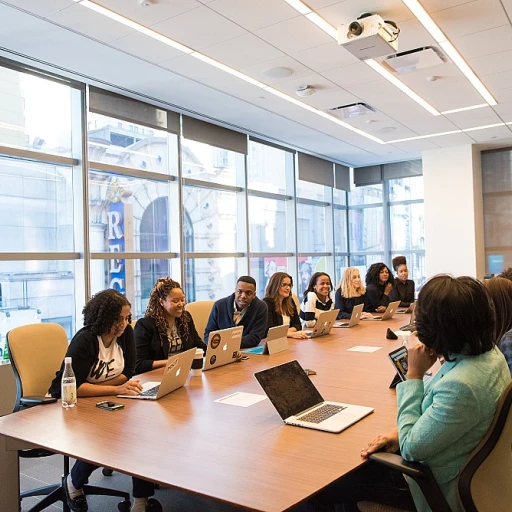
Overview of Georgia's Lunch Break Laws
Key Elements of Georgia's Meal and Rest Break Regulations
In the state of Georgia, understanding the intricacies of lunch break regulations is essential for both employees and employers aiming to foster a productive and supportive work environment. Unlike some states, Georgia does not have specific state laws mandating breaks, but instead, it follows federal guidelines under the Fair Labor Standards Act (FLSA). This means employers are not required to provide breaks, whether paid or unpaid, but if they do, certain rules apply.
For instance, federal law stipulates that short breaks, typically lasting between 5 to 20 minutes, must be compensated as work time when provided by employers. Longer meal breaks, however—typically 30 minutes or more—are unpaid if employees are completely relieved of duty. It's important for employers to ensure their specific policies comply with these federal requirements to avoid potential legal issues.
Despite the lack of state-specific requirements, offering reasonable meal and rest breaks is beneficial for employee satisfaction and productivity. Employers that voluntarily provide these breaks often enjoy higher morale and a more positive workplace culture. For further insights on managing workplace policies, you might find our article on top justifications for missing work informative.
Impact of Lunch Break Laws on Employee Satisfaction
The Influence of Proper Breaks on Workplace Contentment
The implementation and understanding of Georgia's lunch break laws can have a profound effect on the satisfaction levels among employees. When employers provide the required breaks, whether paid or unpaid, they significantly contribute to a healthier and more productive work environment. Despite the fact that federal law does not mandate meal breaks, many employees express increased satisfaction when their employers respect and offer breaks lasting the necessary minutes as per state laws.
When employees work for consecutive hours without adequate rest, it can lead to higher stress levels, reduced productivity, and overall dissatisfaction within the workplace. The law in Georgia requires employers to comprehend and agree with their employees about proper meal and rest breaks, ensuring that the breaks employees receive positively impact their well-being and job satisfaction.
Additionally, appropriate break allowances foster an environment where employees feel valued and respected by their employers. Whether for a short rest or a longer, unpaid meal break, these opportunities provide essential respite from work time, enhancing employees' engagement and efficiency. Providing legally compliant rest breaks, particularly for roles that require long hours or demanding work, can boost morale and retain talent by showing a commitment to employee welfare.
To explore more about the reasons and benefits of taking time off from work, you might find this article on effective reasons to take a day off insightful. The work-life balance considerations discussed can further elucidate the significance of compliant break practices.
Common Employee Feedback on Lunch Breaks
Insights from Employees Regarding Break Policies
Employee feedback about lunch breaks and rest periods sheds light on the practical implications of Georgia's lunch break regulations. Often, the feedback provides crucial insights that can guide employers in crafting effective break policies. One of the prevalent themes in employee feedback is the adequacy of break durations. Employees frequently express concerns when the allotted meal break or rest break does not align with the demands of their work hours. Particularly, feedback suggests a preference for meal breaks that are neither too short to allow sufficient rest nor too long to disrupt work rhythm. Furthermore, employees underscored the importance of consistency in break enforcement. When employers consistently provide breaks lasting the federally suggested minutes, it enhances trust and satisfaction. Employees view consistent enforcement as a sign of an employer valuing both their needs and state labor laws. Conversely, inconsistency leads to dissatisfaction and a perception of unfair work conditions. Additionally, feedback indicates that the timing of breaks can greatly impact satisfaction. Workers who must adhere to consecutive hours without a rest break due to peak work times often report increased fatigue and a decline in productivity. Balancing operational needs with employee welfare through appropriate scheduling can mitigate such issues. Employees also appreciate when employers provide transparency about paid and unpaid break durations, adhering firmly to Georgia's labor laws. This clarity helps prevent misunderstandings and promotes a harmonious work environment. A significant portion of feedback underscores the desire for employers to recognize the individuality of break needs. Personalized break policies accommodate varying workloads, contributing to happier and more productive employees. For those interested in delving deeper into employee perspectives and evaluating the effectiveness of anonymous feedback tools, a comprehensive guide on understanding the costs of anonymous complaint software offers valuable insights.Best Practices for Employers
Optimizing Employee Lunch Break Policies
When it comes to crafting and implementing effective lunch break regulations, employers are encouraged to consider a few best practices to enhance employee satisfaction and productivity. By aligning company policies with Georgia's labor laws, as well as federal requirements, employers can ensure they provide a conducive work environment that respects employees' need for rest and nourishment.- Compliance with Laws: Employers should first ensure that they align their lunch break policies with both Georgia's labor laws and federal law. This means offering meal breaks and rest breaks as required, recognizing the distinction between paid and unpaid breaks, and accounting for the duration of meal breaks and rest breaks.
- Consideration of Work Schedules: Evaluating the typical work hours, including consecutive hours and employees' time commitment, helps determine the most appropriate schedule for breaks. Employers can create a meal rest schedule that ensures no employee is working excessive hours without a break, enhancing their work-life balance.
- Flexibility and Communication: Providing flexibility in when breaks can be taken is vital. Employees appreciate having autonomy over their break time. Encouraging open communication about the necessity of breaks ensures that employees feel comfortable requesting a rest when needed.
- Environment and Facilities: To maximize the benefits of breaks, employers are advised to provide a dedicated, comfortable space for breaks. This might involve setting up a meal area where employees can relax, socialize, or have a quiet moment during their break times.
- Regular Review and Feedback: As with any aspect of workplace management, regularly reviewing policies and seeking employee feedback can identify areas for improvement. Employers can measure the impact of these policies on overall satisfaction and make necessary adjustments.
Case Studies: Successful Implementation of Lunch Break Policies
Real-World Examples of Effective Lunch Break Policies
Implementing effective lunch break policies can significantly enhance employee satisfaction and productivity. Here are some real-world examples of how companies have successfully integrated these policies:
Tech Company Embraces Flexible Breaks
A leading tech company in Georgia decided to offer flexible meal breaks to accommodate the diverse needs of its employees. By allowing employees to choose when to take their meal breaks within a set window, the company observed a noticeable increase in overall job satisfaction. Employees appreciated the autonomy over their work hours, which led to improved morale and productivity. This approach aligns with Georgia's labor laws, which do not mandate specific break times but encourage flexibility.
Manufacturing Firm Implements Structured Breaks
In contrast, a manufacturing firm opted for structured breaks to ensure safety and efficiency on the production floor. Employees were given two 15-minute rest breaks and a 30-minute unpaid meal break during their shifts. This schedule was designed to comply with federal law while maintaining operational flow. The company found that this consistency helped employees manage their work time effectively, reducing fatigue and enhancing focus during work hours.
Retail Chain Offers Paid Meal Breaks
A retail chain took a different approach by providing paid meal breaks to its employees. Although not required by Georgia law, this policy was implemented to boost employee retention and satisfaction. The company reported a decrease in turnover rates and an increase in employee loyalty. By investing in their workforce through paid breaks, the employer demonstrated a commitment to employee well-being, which paid off in terms of reduced recruitment costs and a more engaged workforce.
Lessons Learned
These case studies highlight the importance of tailoring break policies to fit the unique needs of a business and its employees. Whether through flexible scheduling, structured breaks, or offering paid meal breaks, employers can create a supportive work environment that respects both the law and the needs of their workforce. By doing so, they not only comply with break laws but also foster a culture of trust and respect, ultimately benefiting both employees and the organization.
Future Trends in Lunch Break Regulations
Emerging Trends and Predictions for Lunch Break Regulations
In the landscape of labor laws, Georgia's lunch break regulations have been a critical topic. As employers and employees adapt to evolving work environments, several trends in break laws are taking shape. Here’s what we may expect:- Increased Focus on Employee Well-being: Employers are recognizing that meal breaks and rest breaks play crucial roles in promoting employee productivity and satisfaction. There’s a growing trend towards more flexible work hours, so employees can enjoy breaks lasting in accordance with their personal needs.
- Integrating Technology in Break Management: As more workplaces embrace digital transformation, technology is being used to track work time and optimize break schedules. This helps ensure that employees work their required hours while employers provide appropriate meal break time.
- Emphasis on Federal and State Law Alignment: While Georgia's break laws are specific, there is a push to align more closely with federal law standards. This could mean adjustments ensuring that minute meal breaks and rest breaks are more uniformly implemented.
- More Proactive Policies from Employers: To enhance employee satisfaction, employers required to adopt these standards are creating more inventive and accommodating break regulations. For instance, offering unpaid long or paid breaks to suit individual employee needs during consecutive hours worked.












